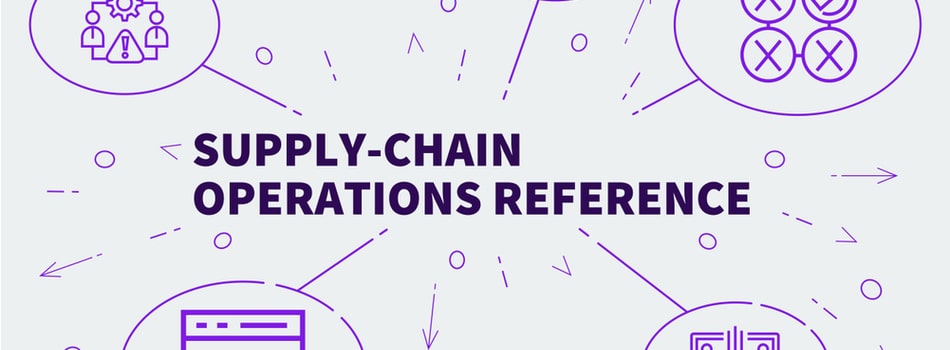Well, I asked Steven Thacker, one of our benchmarking management experts, exactly that question!
I hope his answers help you.
What is Benchmarking?
Benchmarking is essentially comparing; comparing one against another. When we compare different levels of sophistication and performance in supply chains, we can identify particular levels that we think are important to achieve, or that represent typical performance levels for supply chains as a whole.
Those levels are “benchmarks”. Of course, benchmarks and benchmarking can cover all kinds of different things, at work or elsewhere.
Suppose you wanted to be the fastest runner in the world, for example.
The first thing you’d want to know is “what is the benchmark?” meaning “what speed do I have to beat to be the fastest?” You can benchmark for individuals and also for teams. You can also benchmark supply chains.
Sometimes benchmarks, like how fast you run, how high you jump, and so on are easy to identify. They are simple activities to measure and the figures are clear and meaningful. Elsewhere it’s more complex, as is often the case in business.
It’s still just as important, though, if you want your business to improve, to know how you compare, and how good you have to be to be the best.
How Can a Business Start Benchmarking?
You can start with the things organisations frequently want to benchmark. The first of these is “How good is my service?” In fact, it’s also a good idea to go further, because these days, service provision should typically be a competitive advantage for an organisation.
So the questions are rather: “How good is my service today?” and “How good does it have to be to really differentiate my business compared to my competitors?”
A second one is then cost; For instance, “Is that level of service, whether current or planned, cost-effective?” This is a question that frustrates businesses if they only have data that is anecdotal and subjective, and lack the quantitative hard data that really tells them what’s going on.
This is where the SCOR model can be a big help, because it defines formal, structured ways of capturing data, which can then be stored in a database to provide a better guarantee of accuracy.
Using SCOR to Benchmark the Supply Chain
SCOR is a method that’s helped businesses in many different areas, such as quality circles. In the general supply chain area, however, only a few really comprehensive databases exist for organisations to access.
In fact, SCOR is actually an entire reference model for supply chain performance management and improvement, in which benchmarking plays just one part. You don’t need to apply the entire model however, to successfully benchmark your supply chain using SCOR.
The SCOR model is based on three “pillars”. These are the process modeling, performance measurement, and best practices pillars. The performance measurement pillar, which is the one used for benchmarking, is essentially a hierarchy of key performance indicators (KPIs), comprising more than 150 metrics organised into two levels.
Good Data is Key to Success with SCOR
SCOR Level 1 metrics are those most commonly used for supply chain benchmarking, and are divided among five key supply chain attributes, two of which can be said to be internally focused (cost and assets), while the other three focus on the customer (agility, responsiveness, and reliability).
It’s also possible to use level 2 and level 3 metrics for benchmarking the supply chain, provided sufficiently detailed data is available for the peer companies you plan to benchmark against.
Sometimes it’s Good to Look Inward Too
Thus far I’ve focused my answers on external benchmarking; comparing performance with peers. However, supply chain managers, especially those in larger companies with multiple business units, should not lose sight of the value of looking inside the organisation.
Sometimes the solution to a performance problem can be right under your nose. For example, are you sure that you don’t have one or two business units that excel in a performance element which, otherwise, is proving to be a weakness for your supply chain operations?
It’s possible that by finding pockets of excellence within your company, you can exploit the strengths that exist and propagate them across the business, perhaps lifting overall performance to more competitive levels. It’s a strategy worth considering before looking at external benchmarking, because it might allow you to reduce the scope of an external benchmarking exercise, and narrow the gaps between your company and its peers.
3 Good Reasons to Start With Internal Benchmarking
The internal benchmarking process, in itself, comes with several benefits, aside from the potential to improve cross-enterprise performance. For example:
- When you identify best practices that improve performance, it will be easier for your business teams to buy into and adopt them, compared to implementing practices identified externally.
- It can stimulate healthy internal competition, which in turn helps to promote and develop a more innovative business culture.
- It encourages business units/functional teams to communicate, collaborate, and share ideas.
So as a prelude to external benchmarking, why not take a look across your company’s warehouses, transport operations, and procurement functions, benchmark internal performance, and make use of the underutilised innovations driving performance leaders inside your business.
Ready to SCOR with External Benchmarking?
As beneficial as it may be, it’s rare for internal benchmarking to take a company all the way to best-in-class in its industry. Therefore, once you’ve exhausted the possibilities to lift performance to that of your leading business units, it will be time to set your sights on external performance setters, and for that, it’s often a good idea to get a little assistance.
Benchmarking Success maintains a database of multi-level KPIs from more than 800 different supply chains, spanning a range of industries. If you’d like to find out more about benchmarking your supply chain with help from BMS, please feel free to stop by at the website and check out the services on offer.
Steven Thacker is a contributing Author to the Supply Chain Secrets Book Series.
Editor’s Note: This post was originally published on October 20, 2020, under the title “How to Benchmark Your Supply Chain” on Logistics Bureau’s website.








